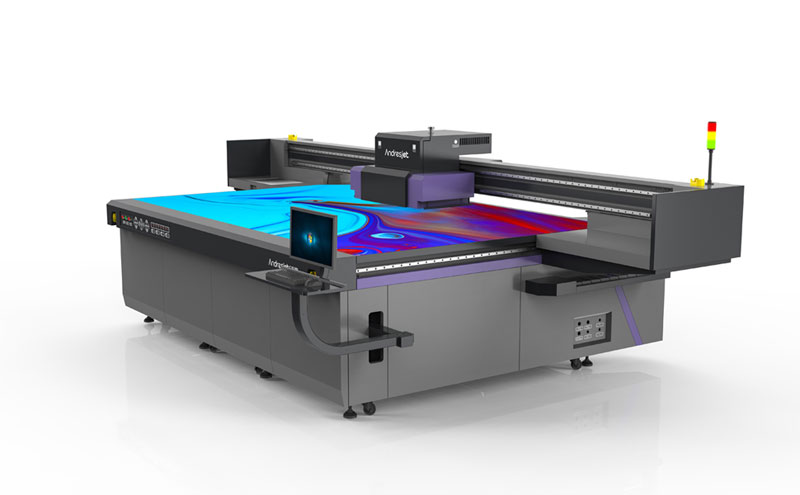How to Maximize the Efficiency of Your UV Flatbed Printer Workflow
How to Maximize the Efficiency of Your UV Flatbed Printer Workflow
In today’s fast-paced business environment, optimizing workflow efficiency is paramount to maintaining competitiveness and profitability. This holds true for the printing industry, where UV flatbed printers have revolutionized the way businesses produce high-quality prints on a wide range of materials. By harnessing the power of ultraviolet (UV) curing technology, these printers deliver exceptional durability, vibrant colors, and precise detail. However, to fully leverage the capabilities of a UV flatbed printer, it’s essential to streamline and maximize the efficiency of your workflow. This article outlines key strategies and best practices for achieving this goal.

1. Understand Your Printer’s Capabilities and Limitations
Before diving into workflow optimization, it’s crucial to have a thorough understanding of your UV flatbed printer’s specifications, capabilities, and limitations. This includes knowledge of its print speed, resolution, supported media types, ink capacity, and maintenance requirements. By familiarizing yourself with these aspects, you can better plan your workflow, ensure compatibility with your materials, and prevent potential bottlenecks or issues that may arise during production.
2. Properly Prepare Your Work Environment
Creating an organized and well-ventilated workspace is vital for maintaining an efficient UV flatbed printer workflow. Ensure that your printer is placed in a clean, dust-free environment with stable temperature and humidity levels. This helps to minimize print defects caused by environmental factors and prolongs the life of your printer’s components. Additionally, having ample space around the printer facilitates easy access for maintenance and material handling.
3. Optimize File Preparation
One of the most critical steps in maximizing workflow efficiency is ensuring that your print files are properly prepared. This involves using the correct file formats, such as PDF or high-resolution TIFF, and ensuring that images are properly calibrated and color-managed. Utilize professional design software that supports UV printing features, such as spot colors and white ink layers, to create print-ready files that minimize the need for adjustments during prepress.
4. Implement Efficient Media Handling
Efficient media handling is crucial for maintaining a smooth workflow. Invest in media handling systems that are compatible with your UV flatbed printer, such as automatic feeders and take-up systems, to reduce manual intervention and increase throughput. Ensure that your media is properly stored and handled to prevent damage or contamination, which can lead to print defects and waste.
5. Utilize Print Queuing and Automation Software
To further streamline your workflow, consider implementing print queuing and automation software. These tools allow you to manage multiple print jobs simultaneously, prioritize tasks based on urgency or deadline, and automate repetitive processes like file preprocessing and job setup. By reducing manual input and minimizing downtime between jobs, you can significantly increase productivity and efficiency.
6. Regularly Maintain and Calibrate Your Printer
Regular maintenance and calibration are essential for maintaining the optimal performance of your UV flatbed printer. This includes cleaning the print heads, checking ink levels, and performing periodic alignments and calibrations. Establish a maintenance schedule that aligns with your printer’s recommended guidelines and adhere to it consistently. A well-maintained printer not only produces higher-quality prints but also reduces the likelihood of unexpected downtime or costly repairs.
7. Monitor and Analyze Your Workflow
To continuously improve your workflow efficiency, it’s important to monitor and analyze your processes regularly. Implement tracking systems that allow you to measure key performance indicators (KPIs) such as print speed, ink consumption, job completion rates, and downtime. Use this data to identify bottlenecks, inefficiencies, and areas for improvement. Regularly review your workflow with your team and make adjustments as needed to ensure continuous optimization.
8. Invest in Training and Skill Development
Your team’s expertise and proficiency play a significant role in workflow efficiency. Invest in training and skill development programs to ensure that your staff is knowledgeable about the latest UV flatbed printing technologies, software, and best practices. Encourage a culture of continuous learning and innovation, and provide opportunities for your team to attend workshops, conferences, and online courses. A well-trained team is more likely to identify and implement efficiency improvements, ultimately contributing to your business’s success.
9. Collaborate with Suppliers and Vendors
Establishing strong relationships with your suppliers and vendors can also enhance your UV flatbed printer workflow efficiency. Work closely with them to ensure timely delivery of consumables, such as ink and media, and to stay informed about new products and technologies that can improve your processes. Leverage their expertise and support for troubleshooting, maintenance, and upgrades, which can help minimize downtime and keep your printer operating at peak performance.
10. Embrace Innovation and Technology Upgrades
Finally, to stay competitive and maximize workflow efficiency, it’s essential to embrace innovation and technology upgrades. Keep abreast of the latest advancements in UV flatbed printing technology, such as faster print speeds, improved ink formulations, and advanced automation features. When appropriate, invest in upgrades or new equipment that can enhance your capabilities and streamline your processes. By staying at the forefront of technology, you can better meet the evolving needs of your customers and maintain a competitive edge in the market.
Conclusion
Maximizing the efficiency of your UV flatbed printer workflow requires a comprehensive approach that encompasses understanding your printer’s capabilities, optimizing file preparation, implementing efficient media handling, utilizing automation software, and maintaining a well-trained team. By continuously monitoring and analyzing your processes, collaborating with suppliers, and embracing innovation, you can create a streamlined, high-performing workflow that delivers exceptional results and drives business success. With these strategies in place, you’ll be well-equipped to harness the full potential of your UV flatbed printer and stay ahead in the competitive printing industry.
